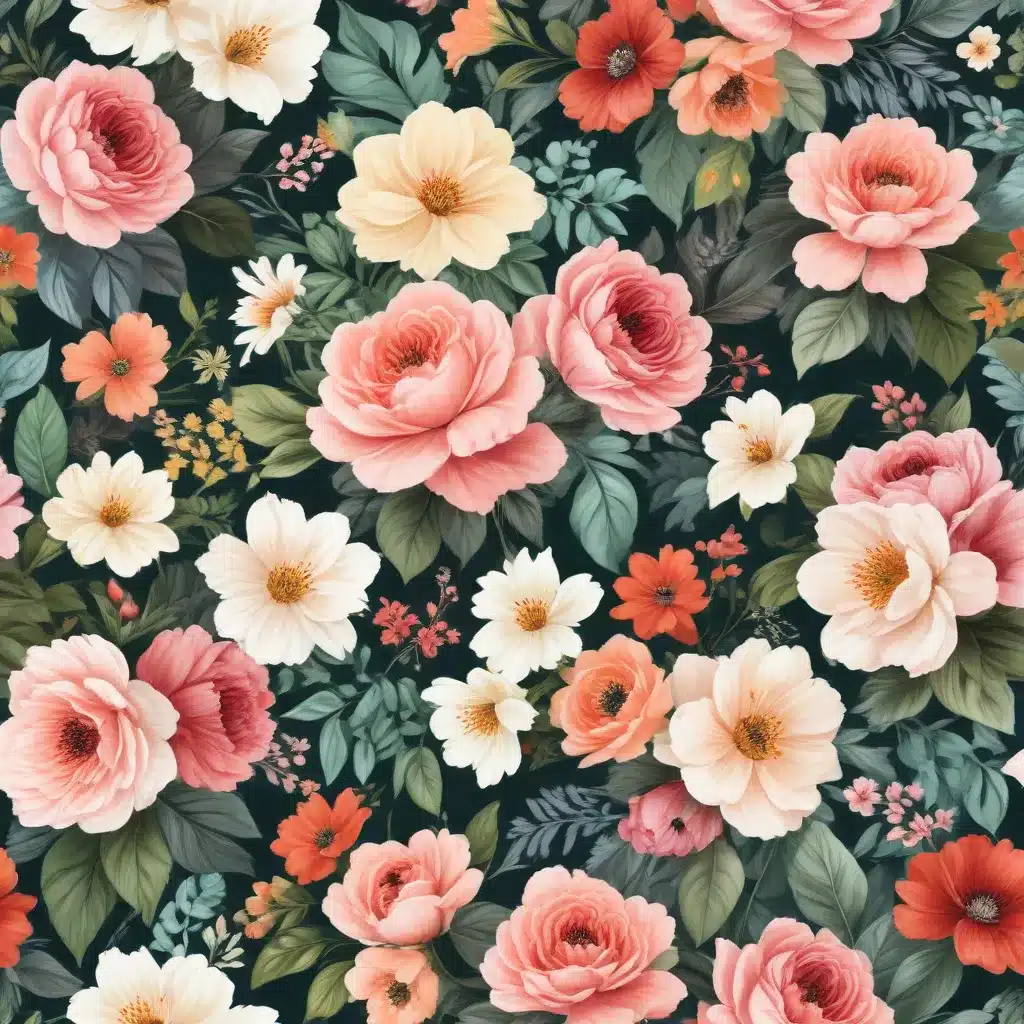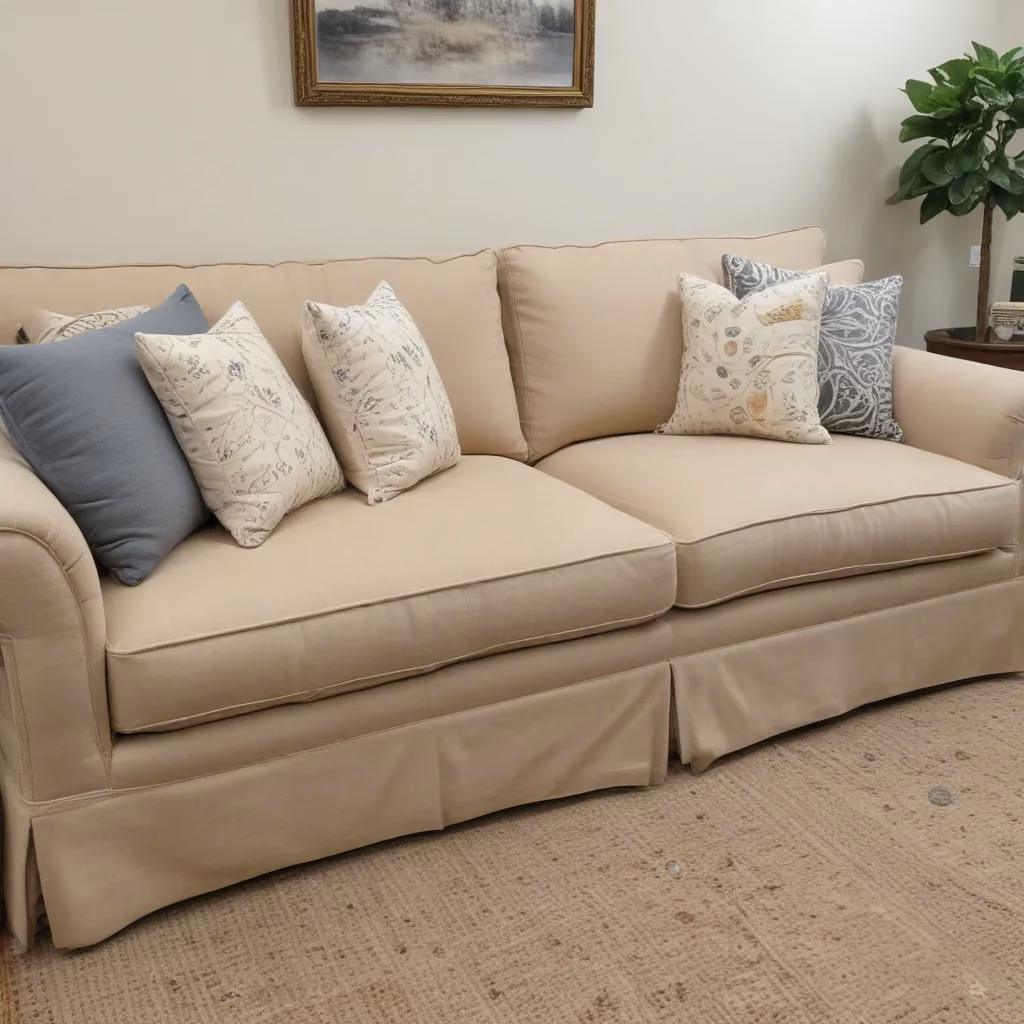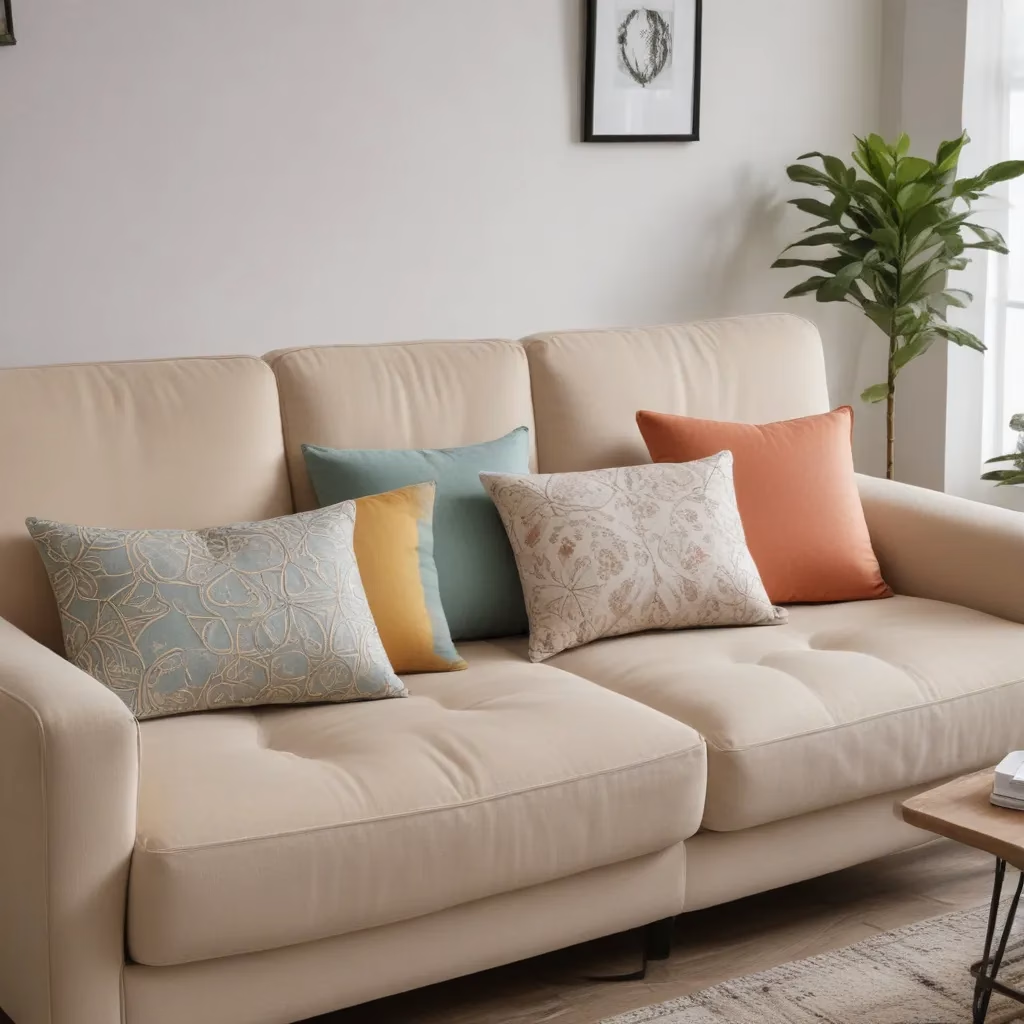
The Enduring Appeal of Floral Patterns
Floral patterns have long been a staple in interior design, often associated with the freshness and renewal of spring. However, these versatile motifs can add charm and character to your living spaces throughout the year. As a furniture specialist, I’ve seen firsthand how floral designs can transform a room, creating warmth and visual interest regardless of the season.
The beauty of floral patterns lies in their ability to evoke nature’s elegance indoors. They bring a sense of life and vibrancy to our homes, even when the world outside might be grey and dreary. But how can we incorporate these patterns effectively without making our spaces feel outdated or overly feminine? The key is in the application and the choice of florals.
In my experience, the most successful floral designs in home decor are those that strike a balance between bold and subtle. They can range from large, dramatic blooms to delicate, barely-there petals. The trick is to use them in a way that complements your existing decor and reflects your personal style. Whether you’re a fan of classic roses or prefer more abstract botanical prints, there’s a floral pattern out there for every taste and every season.
Choosing the Right Floral Patterns for Your Space
When selecting floral patterns for your home, it’s essential to consider the overall aesthetic you’re aiming for. Are you looking to create a cozy, cottage-like atmosphere, or are you after a more modern, streamlined look? The scale and style of the floral print can make a significant difference in the final effect.
For a contemporary feel, I often recommend large-scale floral prints with bold colors and clean lines. These can work wonderfully on statement pieces like sofas or armchairs. On the other hand, if you’re going for a more traditional or rustic vibe, smaller, more intricate floral patterns might be the way to go. These can be particularly effective on accent pieces like throw pillows or curtains.
It’s also worth considering the color palette of your floral patterns. While spring-inspired pastels are lovely, they’re not the only option. Rich, deep hues can make floral patterns feel appropriate for autumn and winter. Think burgundy roses, navy forget-me-nots, or golden sunflowers. These darker tones can add depth and warmth to your space during the colder months.
Incorporating Floral Patterns in Different Rooms
Living Room Florals
The living room is often the heart of the home, and it’s a great place to experiment with floral patterns. A floral sofa can be a stunning centerpiece, but if you’re not ready for such a bold statement, start small. Floral throw pillows or a patterned area rug can add a touch of nature without overwhelming the space.
I’ve found that mixing and matching different floral patterns can create a layered, eclectic look that feels curated rather than chaotic. The key is to vary the scale of the patterns and stick to a cohesive color scheme. For example, you might pair large-scale floral curtains with smaller floral print cushions, keeping them in the same color family.
Remember, floral patterns don’t have to be limited to fabric. Floral-inspired wallpaper can create a stunning accent wall, while botanical prints or paintings can add a softer touch of floral charm to your walls.
Bedroom Blooms
In the bedroom, floral patterns can create a serene and romantic atmosphere. A floral duvet cover or quilt can be the focal point of the room, paired with solid-colored sheets for balance. If you prefer a more subtle approach, consider floral-patterned curtains or a upholstered headboard with a delicate floral print.
One of my favorite ways to incorporate florals in the bedroom is through accessories. A floral-patterned lampshade, for instance, can cast beautiful shadows and create a soft, ambient light. Or, you might opt for a floral-patterned ottoman at the foot of the bed for both style and function.
Kitchen and Dining Room Florals
The kitchen and dining room might not be the first places you think of for floral patterns, but they can work beautifully in these spaces. Floral-patterned dining chairs can add a playful touch to your dining area, while floral curtains or roman shades can soften the often hard surfaces of a kitchen.
In the dining room, consider using floral patterns in your table settings. Floral-patterned china or table linens can create a festive atmosphere for both everyday meals and special occasions. And don’t forget about the power of fresh flowers – a beautiful bouquet can tie together all your floral elements and bring life to the space.
Balancing Floral Patterns with Other Design Elements
While florals can be beautiful, it’s important not to overdo it. The key to using floral patterns effectively is to balance them with other design elements. Solid colors, geometric patterns, and natural textures can all work well alongside florals to create a harmonious design.
For example, if you have a bold floral sofa, you might pair it with solid-colored throw pillows and a textured wool rug. Or, if you’ve opted for floral curtains, balance them with simple, clean-lined furniture. The goal is to let your floral elements shine without overwhelming the space.
It’s also worth considering the other patterns in your room. Stripes, for instance, can pair beautifully with florals, adding structure and contrast. Just be sure to vary the scale of your patterns to keep things interesting.
Seasonal Updates for Your Floral Decor
One of the great things about floral patterns is their versatility throughout the year. With a few simple changes, you can update your floral decor to suit each season.
In spring and summer, light, airy florals in pastel or bright colors can create a fresh, cheerful atmosphere. Think about swapping out heavy curtains for sheer floral panels, or adding floral-patterned throw pillows in light fabrics like linen or cotton.
As autumn approaches, you might introduce florals in richer, warmer hues. Deep reds, oranges, and golds can reflect the changing leaves outside. Consider adding a floral throw blanket to your sofa, or switching to floral bedding in these autumnal tones.
In winter, florals don’t have to disappear. Instead, opt for patterns featuring winter blooms like poinsettias or holly. You might also consider floral patterns in unexpected winter colors like deep blue or silver for a festive touch.
Caring for Floral-Patterned Furniture and Fabrics
To keep your floral-patterned items looking their best year-round, proper care is essential. For upholstered furniture with floral patterns, regular vacuuming is key to prevent dust and dirt from settling into the fabric. Use the upholstery attachment on your vacuum cleaner and go over the entire surface, paying extra attention to crevices and seams.
For removable fabric items like cushion covers or curtains, always check the care label before washing. Many floral fabrics are best cleaned professionally to preserve their color and pattern. If machine washing is possible, use a gentle cycle with cold water and mild detergent to prevent fading.
In case of spills, act quickly to blot (not rub) the stain with a clean, white cloth. Avoid using harsh chemicals that could damage the fabric or alter the colors of your floral pattern. For stubborn stains, it’s best to consult a professional cleaner who has experience with patterned fabrics.
Mixing Floral Patterns with Other Design Styles
Floral patterns can work well with a variety of design styles, from traditional to modern. In a traditional setting, classic floral prints in muted colors can enhance the timeless feel of the space. Pair them with antique furniture and rich wood tones for a cohesive look.
For a more modern approach, consider abstract or oversized floral prints. These can add an unexpected twist to a contemporary space. Try pairing a large-scale floral print with sleek, minimalist furniture for an interesting contrast.
In an eclectic space, don’t be afraid to mix different floral patterns. The key is to vary the scale and keep a consistent color palette. You might combine a large floral print on curtains with a smaller, more delicate floral on throw pillows, tied together by complementary colors.
The Psychology of Floral Patterns in Interior Design
As a furniture specialist, I’ve observed how floral patterns can affect the mood and atmosphere of a room. Research has shown that nature-inspired patterns like florals can have a positive impact on our well-being, reducing stress and promoting a sense of calm.
Floral patterns can also influence our perception of space. Larger floral prints can make a small room feel more spacious, while smaller, more intricate patterns can add coziness to a large area. The colors in your floral patterns play a role too – cool-toned florals can make a room feel larger and more airy, while warm tones create a sense of intimacy and comfort.
When choosing floral patterns for your home, consider not just the aesthetic appeal, but also the emotional response you want to evoke in the space. Soft, pastel florals might be perfect for creating a tranquil bedroom retreat, while bold, vibrant florals could energize a home office or living area.
Floral Patterns in Different Cultural Contexts
Floral patterns have different meanings and uses across various cultures, which can add an interesting dimension to your interior design. For example, in many Asian cultures, certain flowers have specific symbolic meanings. Cherry blossoms in Japanese design represent the transient nature of life, while lotus flowers in Indian decor symbolize purity and enlightenment.
In Scandinavian design, floral patterns often feature stylized, geometric interpretations of flowers, reflecting the region’s appreciation for clean lines and natural elements. Meanwhile, English country style is known for its lush, romantic floral prints, often featuring roses and other cottage garden flowers.
Understanding these cultural contexts can help you choose floral patterns that not only look beautiful but also carry deeper meaning or reflect your heritage. It’s a wonderful way to add personal significance to your decor while creating a visually appealing space.
The Future of Floral Patterns in Home Decor
As we look to the future, floral patterns continue to evolve and adapt to changing design trends. We’re seeing a move towards more abstract and artistic interpretations of florals, with designers playing with scale, color, and form in innovative ways.
Technology is also influencing floral patterns in home decor. Digital printing techniques allow for incredibly detailed and vibrant floral designs that were previously impossible to achieve. This opens up new possibilities for customization, allowing homeowners to create unique, personalized floral patterns for their spaces.
Sustainability is another factor shaping the future of floral patterns. There’s a growing interest in eco-friendly fabrics and production methods, which is influencing both the design and manufacture of floral-patterned home goods. We’re likely to see more floral patterns inspired by native and drought-resistant plants, reflecting a broader trend towards environmentally conscious design.
As a furniture specialist, I’m excited to see how these trends will shape the use of floral patterns in our homes. Whether you’re drawn to classic floral prints or cutting-edge designs, there’s never been a better time to incorporate these timeless patterns into your decor. Remember, the key is to choose florals that resonate with your personal style and create a space that feels uniquely you.
For more inspiration on how to incorporate floral patterns and other design elements into your home, visit Sofa Spectacular. Our team of experts is always ready to help you find the perfect pieces to bring your vision to life.



